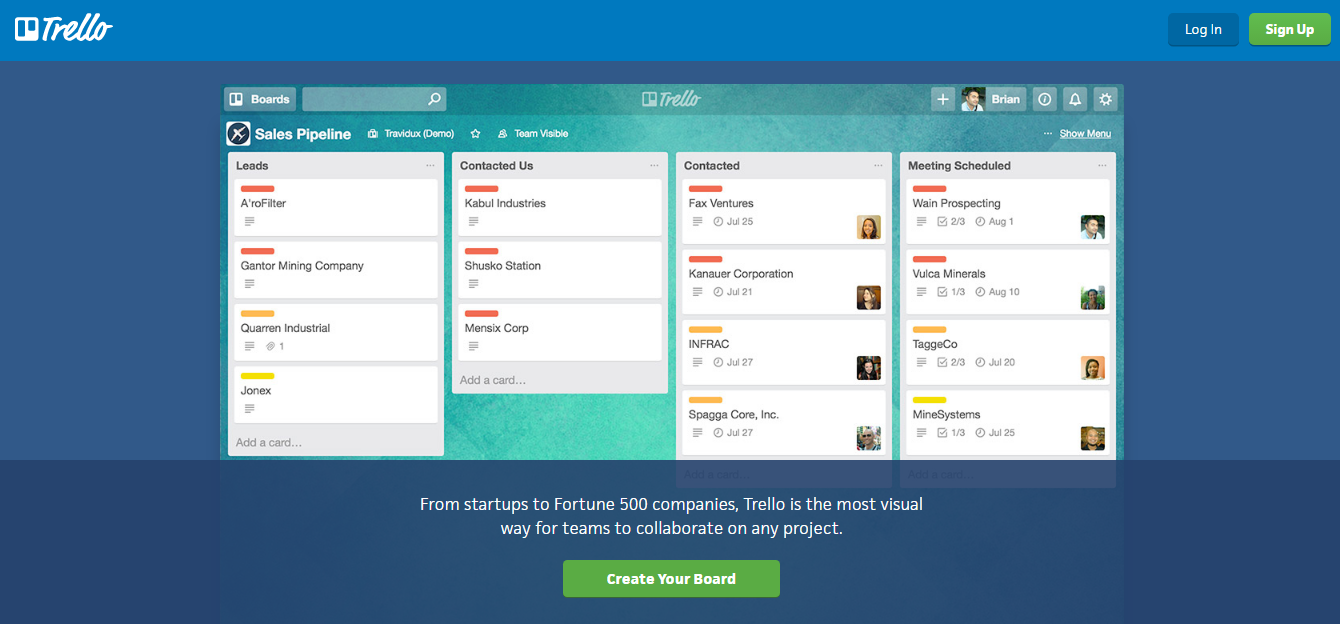If you’re anything like most business owners, you’re always busy.
Working around the clock, doing everything from high-level projects –like goal-setting, strategizing, and networking; to routine, everyday tasks –responding to voicemails, managing your blog, and answering customer support tickets.
If this sounds familiar to you, then there’s a good chance that you may be able to benefit from outsourcing –and offloading many of your tasks to a virtual assistant (VA).
A VA is quickly becoming something of a necessity in today’s world, where our workloads are consistently rising. Outsourcing allows you to free yourself up from some of the routine time-consuming tasks, not only saving you time –but also allowing you to ensure that the tasks that need to be done, actually get finished.
If you’re curious about the prospect of a VA –and wondering if it’s the best decision for your company, here’s a look at just a few reasons that outsourcing makes sense –and some tips for doing it successfully!
Why Outsource?
If you’re on the fence about outsourcing, you wouldn’t be alone. Many entrepreneurs are in the same boat.
As business owners, we’re used to doing it all, rising to the occasion and wearing a number of different hats at any given time. For most of us, this ability to “shapeshift” is part of what drove us to start our own business in the first place, and being good at a number of different things is a badge we wear with pride.
But the truth is, while doing things yourself certainly has its merits –especially when you’re first starting out and looking to keep costs down –after a while, you’ll soon find that you’re in over your head. There’s also a risk that after doing everything yourself for so long, you may have become accustomed to it.
You simply feel that it’s the best way to do things –without realizing that slowly, these time-draining activities can start to impact your ability to focus on more high-level tasks. It may even be preventing you from effectively growing your business.
According to one research study, though, some 53 percent of business owners believe that they could grow their business by more than 20 percent if they were able to delegate even only 10 percent of their workload to someone else. That’s significant!
It’s also important to consider even spending just a few hours a week on admin tasks is something that can really add up over the course of a year. Say you spend four hours a day on admin work, that’s 1,040 hours a year spent on mundane tasks that could most likely have easily been outsourced.
Outsourcing, when done right, offers tremendous value to any professional today.
Effective Outsourcing
For most entrepreneurs, though, delegating doesn’t always come naturally.
As Harvard Business Review says, “One of the most difficult transitions for leaders to make is the shift from doing to leading.” In order for your company to grow, though, it’s pivotal that you’re able to make the transition from doing all of the routine tasks yourself –to instead focusing your attention on those areas of your business that are vital for your company’s growth.
This, of course, means being able to delegate.
In addition to freeing you up to devote your energy to more high-level tasks, other key benefits of delegating include:
- Reducing your workload
- Helping you to gain back time
- Reducing stress
- Training people to handle tasks in your absence
- Ensuring that important (but routine) tasks get done
All things that a good virtual assistant (VA) can help with.
Establish What Success Looks Like
Too often entrepreneurs outsource, but don’t establish any way of measuring how the VA is actually performing.
In order to ensure that you’re getting the most out of your VA, you’ll want to start by establishing clear objectives: what does successful outsourcing look like to you?
Once you’re clear on your big-picture goals, you’ll be able to establish clear benchmarks that you can use to track your VA’s progress. While this will look different each time, and vary according to the type of tasks that you’re having your VA do, here’s a look at a few tips for establishing tracking criteria from the start:
Set KPIs
Key Performance Indicators (KPIs) are a vital first step in tracking your VA’s performance. Before you bring someone on board, consider documenting what you expect from them. This includes what you’d like to see them accomplish at the end of every work week. Your KPIs should be as specific as possible to keep everyone on the same page. Of course, for best results, they should also be realistic and in some way measurable.
Here’s a look at what some example KPIs could look like:
- Number of new sign-ups recruited
- Number of comments made on industry-specific blogs
- Number of posts made to social media per week
At the end of the day, your KPIs will probably look very different. The important thing is to establish a way to track your VA’s performance.
Keep in mind that for tasks that are more repetitive in nature, such as data entry or answering phone calls, a KPI could even be less about achieving high-level business growth, and more about ensuring that all of the assigned tasks are completed on time. A checklist can aid greatly when it comes to ensuring quality and helping to prevent missed steps.
Have Your VA Send Daily Reports
Having your VA send you daily reports, documenting what they did during their shift can be a great way to track their performance. This is also a good opportunity to receive updates on the status of the projects that your VA is working on.
Set Weekly Meetings
Holding weekly meetings via Skype allows you to outline your goals for the week and discuss what the VA has accomplished the week before. This can also allow you to discuss any potential issues that came up. Of course, keep in mind that for VAs who are dealing with repetitive tasks, a weekly meeting may not be necessary. In other cases, monthly meetings may be enough.
Assessing Your Projects
Of course, successful outsourcing isn’t about simply hiring someone to run in circles for you, instead, it’s about taking a strategic approach, and ensuring that you find someone to complete jobs that are both necessary and important.
Most likely you have a long list of jobs that you could outsource.
But before you do, a word of advice –it’s worth spending a few minutes assessing the tasks, to see if they’re things that even need to be outsourced in the first place.
Before you outsource, it’s a good idea to first ask yourself if the task is something that can be:
- Eliminated
- Simplified, or
- Automated
If the answer is no to all of the above, then the task is a good candidate for delegation.
Let’s break this up practically now:
Can It be Eliminated?
First, you’ll also want to determine whether the task that you’re thinking of outsourcing is something that really adds value to your bottom line. Do you really need a customer rep to be available 24/7, or is email customer support sufficient? Do your customers find value in the monthly newsletters that you’re sending out, or would your efforts be better spent somewhere else? There’s no point in delegating tasks that don’t add any value to you –or your customers.
Can It be Simplified or Automated?
Next, some tasks may be able to be simplified. For instance, if you spend a lot of time doing emails or sorting documents; maybe you just need a more efficient workflow or solution.
Maybe a better document management tool, or allocating specific time-blocks for reading and responding to emails would help to reduce the time spent on these activities. Or, consider whether the task is something that can be automated entirely –with the help of a new app or subscription.
Finally, the remaining tasks –the ones that shouldn’t be eliminated, but are already as streamlined as possible are excellent candidates for outsourcing!
In some cases, you might find that a combination of automation and outsourcing is the best option. A good example of this would be social media marketing.
Using software like Hootsuite or Buffer to schedule out your posts for the week is a good way to automate part of the process and something that can help to save a considerable amount of time.
However the fact still remains that entering the data in the first place can still easily eat up an hour, or more, of your time each week. In this scenario, outsourcing the work to a VA, and having them use your Hootsuite account would be the most practical –and cost-effective option.
Remember, at the end of the day, it’s not just about reducing your workload, but also about ensuring that those tasks that need to get done, do –as efficiently as possible.
Tasks That You Can Delegate
Wondering what you could delegate to a VA? A better question might be, what can’t you outsource!
Tasks that you can easily delegate to a VA include:
- Tasks that require recurring decisions and actions
- Time-sensitive tasks that others can handle
- One-time projects
- Tasks that are part of bigger projects that you’re handling
- Email management
- Calendar management
- Booking appointments
- Billing
- Setting up email autoresponders
- Following up with clients
- Creating spreadsheets
- Checking voicemails, responding
- Data entry
- Research
- Recruitment
- Answering customer support tickets
- Participating in discussion forums
- Handling questions or support requests via Facebook
- Keeping customers updated
- Solving customer concerns and handling inquiries
- Checking the status of customer orders
- Building a database
- Making travel arrangements
- Reception tasks
- Creating reports
- Preparing slideshows
- Managing social media accounts
- Managing your blog
- Responding to comments on your blog
- Posting comments on other blogs
And much more!
Of course, your list may look very different. Additionally, you may not even want to delegate many of the above, if you find that they don’t offer value to your business. Still, it gives you a good idea about some of the tasks that you can outsource to a VA.
But while a VA can do most of the above, it’s important to consider carefully whether the tasks you’re thinking of outsourcing are things that a remote worker, and indeed, one person can handle on their own.
You’ll also want to avoid falling into the trap of thinking that one person can do it all.
“One of the biggest misconceptions of working with virtual staff is that one employee can do everything for you,” says entrepreneur and bestselling author Chris Ducker in his article, 101 Tasks to Outsource to Virtual Staff to Grow Your Business!
“I call this the ‘Super VA Myth’, and I’ve busted it over and over again!” Ducker says, “It’s just not possible. Not in the real world, and not in the virtual world.”
In many cases, you’ll have a hard time finding one super-person who’s able to do every task –and well. Instead of looking for a one-size-fits-all solution, you may want to consider outsourcing specific tasks to the relevant specialists.
In addition to your VA, you may want to consider hiring the following professionals for specific tasks on an as-needed basis:
- Online Marketer
- Content Writer
- Video Editor
- Graphic Designer
- App Developer
Outsourcing Administrative Tasks
At the end of the day, most business owners find that administrative tasks are the ones that eat up the most of their time. Fortunately, these tasks are also among the easiest to outsource, as they are process-driven and repetitive. Hiring a VA allows you to ensure that these tasks get done, and on time, freeing you up to focus on other things.
Tips for Effectively Leveraging a Virtual Assistant
Okay –so you’ve seen the benefits of delegating, and maybe you’re thinking of getting a VA yourself.
In order to set yourself up for success, though, you’ll need to ensure that you have the right strategy in place. This involves setting clear parameters, finding the right person for the job, and communicating your expectations clearly.
With this in mind, here’s a look at some tips for leveraging a virtual assistant –for best results!
Determine Which Tasks You Will be Outsourcing
According to Julian Birkinshaw and Jordan Cohen’s article on Harvard Business Review, at least one-quarter of a typical knowledge worker’s activities could be eliminated or delegated.
To see where your time is going, try to document how you spend your time, jotting down especially time-consuming tasks over course of a day. Then, take a look at your activities to see where your time is going. Identify tasks that just aren’t that important to you –and ones that matter –that could be automated or outsourced.
Budget Accordingly
Next, you’ll want to make sure you have a clear idea about the amount of work you can afford. In most cases, you’ll be paying per hour rather than per task, so decide ahead of time if you need daily, weekly, or monthly assistance –and budget accordingly.
Choose the Right VA
While many of us feel a distinct sense of unease when it comes to delegation, passing the work on to qualified individuals can help to make the process far less stressful and much more rewarding too.
So how can you ensure that you hire the right person for the job? Success when hiring a contract worker is largely the same as when hiring in-house. You’ll want to start by setting specific criteria; a job description or list of tasks that the individual will be expected to complete.
Establishing clear standards allows you to ensure that you find someone who has the skills necessary to complete the job. You’ll also want to assess their relevant background and experience. This will give you a good idea of their capabilities for the tasks at hand, as well as an indication of other tasks that they may also be able or willing to take on.
When you have a potential candidate, you’ll want to schedule a call to discuss the position further with them.
Communicate Clearly
Once you’ve got a VA on board, you’ll want to ensure that you on-board them properly! When assigning tasks, be sure to convey your end goals with each one –this includes the desired end result, any processes you’d like them to follow, as well as your expected turnaround time. Remember: your VA isn’t a mind reader. They’ll also have a hard time guessing what you’d like them to do, so be sure to fill them in on any important details pertaining to their new job.
Have a Plan for Document Sharing
You’ll also want to establish a system for sharing documents with your VA –and any other team members that you bring on board. Having a platform ready to go –whether that’s Google Drive, Dropbox, Trello, or Asana will make it easier to collaborate on projects and save valuable time.
Trello is a great project management and document sharing tool that’s ideal for overseeing projects. This platform makes it easy to make checklist templates, and allows multiple parties to share and access documents, while keeping everything organized in an easy-to-use interface.
Create Checklists or Tutorials
Getting your assistant on board and familiar with your process is easy when you’ve taken the time to create checklists or tutorials for tasks. Video may be easier for technical tasks while a simple list should suffice for basic admin jobs.
Decide on a Method and Schedule for Communication
Next, it’s also a good idea to establish a communication schedule or protocol. Whether it’s a once-daily call, email, or a chat program –communicate your availability to answer questions, and find a solution that works best for you both to improve efficiency and help the process to go more smoothly.
Review and Provide Feedback
Finally, ensure that your VA’s ongoing work is up to standard by regularly reviewing it and providing constructive feedback. This may take an initial investment of time –especially in the beginning, but you’ll soon see your efforts pay off. As your VA becomes familiar with your expectations they’ll be able to adjust their approach to meet your requirements.
In many ways, success with a VA is like success with any joint-venture, it’s contingent on both parties making it work. Ensure that you do what you can by establishing clear protocols and procedures, communicating clearly, and being prepared to provide constructive feedback. Your VA should be happy to dive into the tasks that you assign, accommodating to your suggestions, and willing to learn.
While outsourcing successfully requires an initial time investment, at the end of the day, it’s a strategy that can pay off tremendously. As you outsource, you’ll be able to claim back those valuable hours, and start focusing your attention on high-level tasks –like scaling your company.
What could you delegate? Better yet, what would you do with your extra time?
If you’d like to start outsourcing more, be sure to check out our FREE download. See how you can unlock your potential by outsourcing everyday tasks to a VA today.









